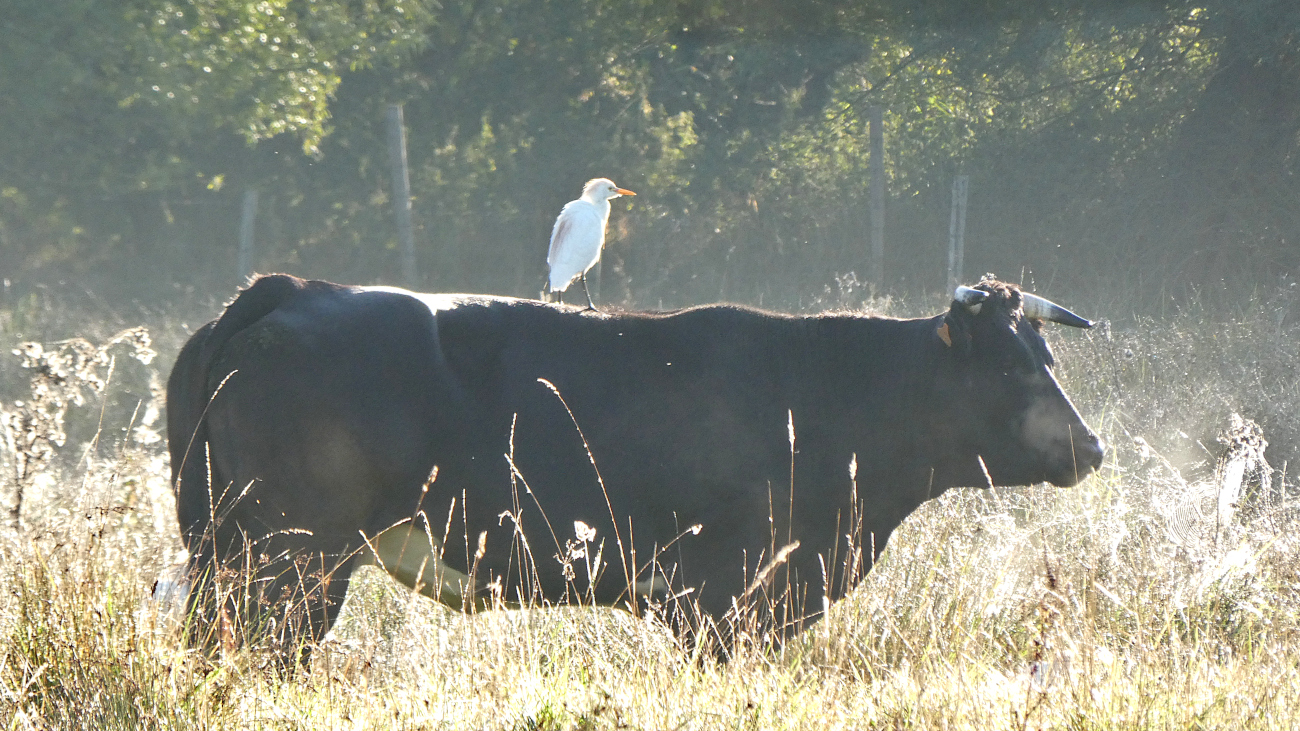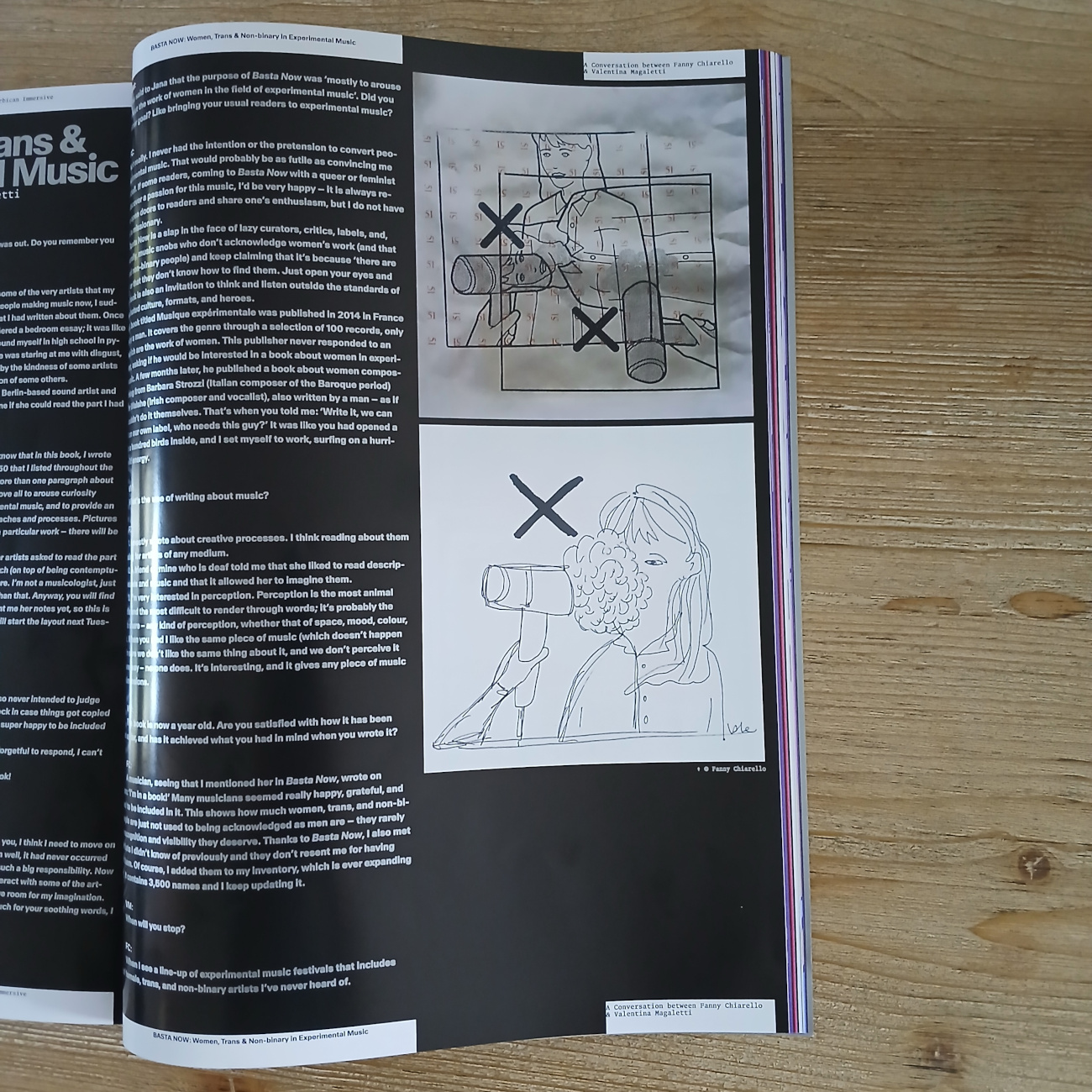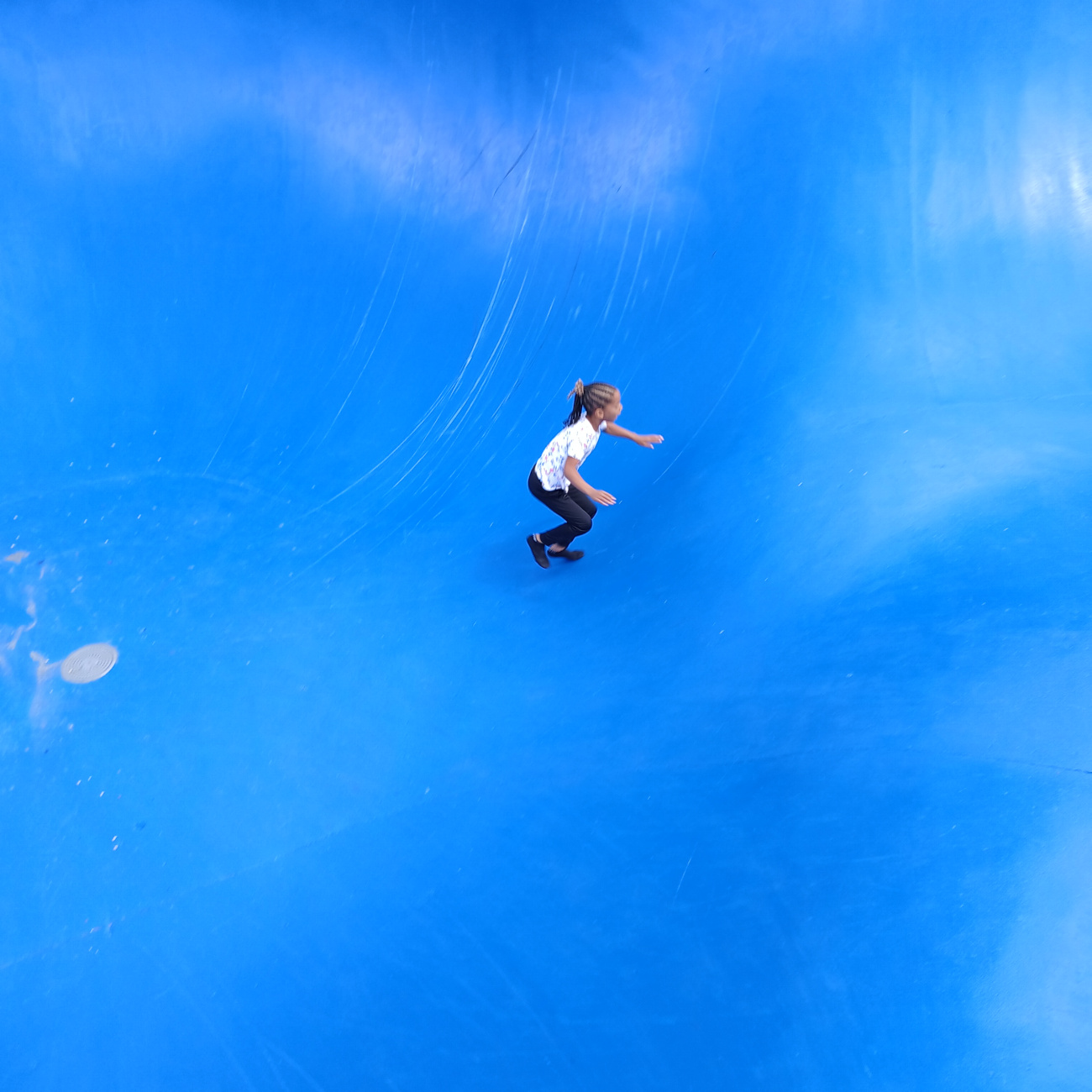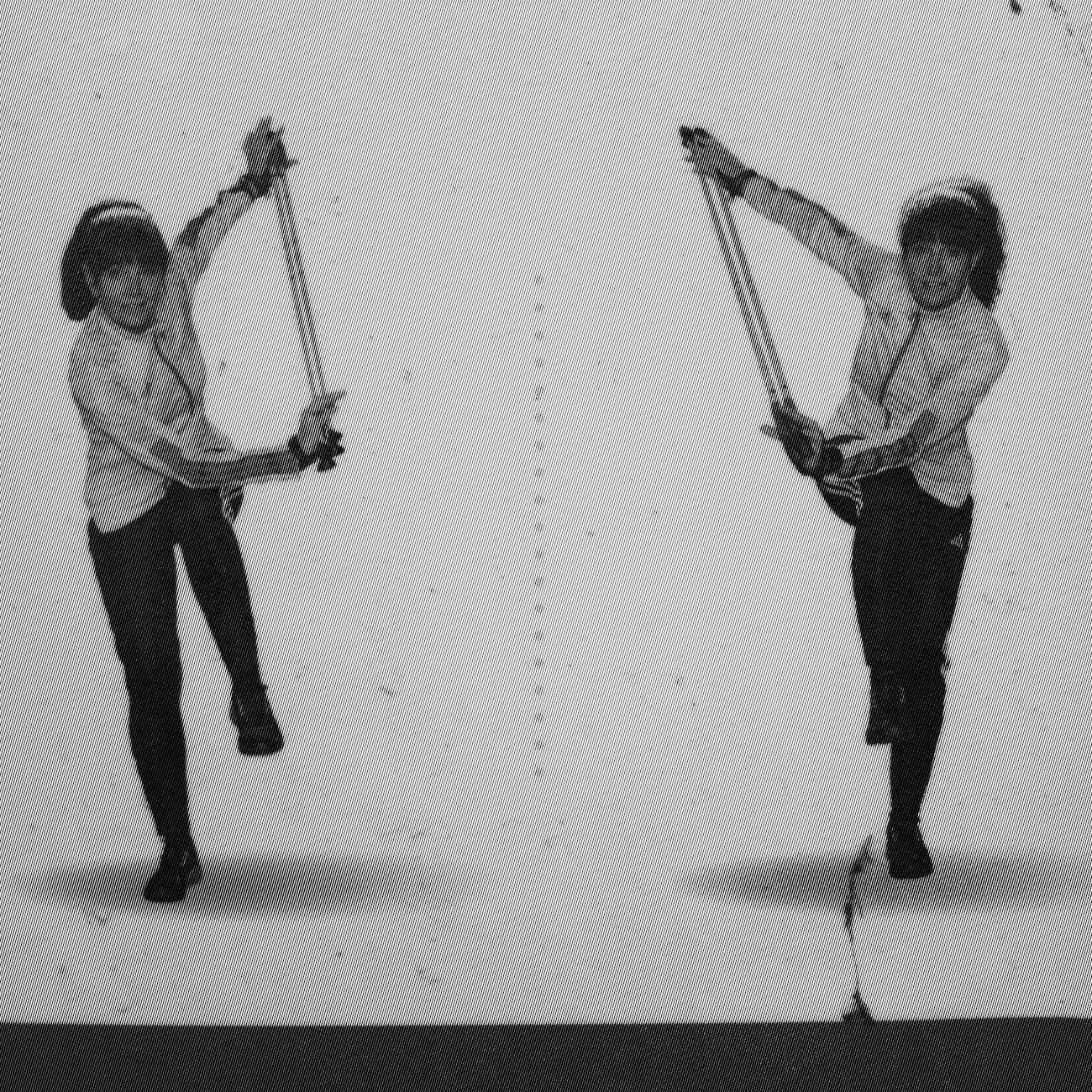
(Barbara Peeters, Summer School Teachers, 1974.)

(Barbara Peeters, Summer School Teachers, 1974.)
Ici, on sent déjà les prémices de l’automne sans avoir vraiment goûté l’été : le vent nous privait de ce suspens si particulier, fait d’immobilité et d’une acoustique élastique, à la fois ample et précise, que j’aime tant d’habitude en cette saison. J’ai peur que cette sensation ne revienne jamais, qu’elle ait été emportée par le vent du changement climatique.
Cet été, j’ai vu des humain-es tourner en rond dans leur propre cerveau sans s’apercevoir que leur cage était ouverte – et si vous leur désignez l’issue, iels reculent, terrifié-es. J’ai vu des animaux non-humains dans des enclos bien fermés, aussi étroits que leur solitude était immense, et dont le regard avait la profondeur insondable de la mort. J’ai vu des animaux non-humains écrasés, des hérissons par centaines, quelques lapins et lièvres, trois grenouilles, deux chats. J’ai vu des centaines d’animaux non-humains libres que les chasseurs pourront bientôt harceler, transformant la paix relative de la belle saison dans leur habitat morcelé en un long enfer. Déjà, dans les réserves naturelles, les sites ornithologiques, la « chasse de loisir » a commencé. J’invente des prières profanes pour chaque être innocent que menacent mes congénères les plus répugnants ; ça ne soulage que moi.
Je contemple le crépuscule de la civilisation. Je regarde les faux enjeux que les humain-es tournent entre leurs mains comme des articles de bazar. Je regarde des humain-es taguer leur blaze sur un immeuble dont la démolition a déjà commencé. Je trouve dans l’idée de la fin imminente un vif sentiment de liberté.
Je posterai bientôt ici une sélection de mes innombrables photos de chevreuils et chevrettes prises ces trois derniers mois. En attendant, voici une vision émouvante de complicité interspécifique – j’ai photographié ce héron garde-boeufs et son camarade ce matin, dans la petite ville d’Annequin, un peu après l’aube.

Je ne suis pas peu fière que Basta Now figure dans le catalogue de Feel the Sound, exposition visible cet été au Barbican Center (qui est en quelque sorte l’équivalent londonien du centre Pompidou), sous forme d’une fausse interview puisque j’ai fait les questions et réponses. Merci à Taous Dahmani pour l’invitation.



Traduction du texte de présentation du catalogue :
« Ce catalogue richement illustré accompagne « Feel the Sound », une exposition phare au Barbican. Alliant art, science et innovation sonore, cette publication explore la manière dont le son façonne nos mondes émotionnel, physique et social.
Publié par Taous Dahmani et conçu par Other Office, le catalogue s’inspire de l’énergie graphique et du dynamisme éditorial des magazines musicaux emblématiques. Mêlant réflexions savantes et expérimentation créative, il présente un mélange dynamique d’essais, de questions-réponses, de poésie, de bandes dessinées, de conversations, de protocoles, de partitions et de témoignages en coulisses.
« Feel the Sound » est à la fois une ressource essentielle et une expérience sensorielle : une invitation à se connecter, à monter le son et à écouter plus attentivement le monde qui nous entoure. »
Parfois je fais pipi au bord d’un sentier perdu à l’écart de la civilisation et je me rends compte que j’ai de la compagnie. Ce n’est pas embarrassant, c’est la nature. J’aime bien cette photo, ses couleurs un peu années 70s (je ne l’ai pas fait exprès).

Et j’aime bien mes étés à mi-temps. J’aime mes matinées à vélo à la campagne, au bord d’un canal ou d’un autre, dans la forêt ; j’aime la brûlure dans les muscles et le son des pneus qui avalent les kilomètres par dizaines à mesure que le soleil se fait plus piquant. J’aime voir des oiseaux d’eau par centaines, de furtifs martins-pêcheurs, des chevreuils, des lapins, des lièvres, des faisans mécontents ; j’aime la musique et parfois aussi, à la campagne, le silence (ou ce qui s’en approche quand on a des acouphènes), j’entends par là l’absence d’un perpétuel ronronnement de moteurs, de travaux, de clameurs, où l’on entend distinctement les ailes des oiseaux, les bruissements dans les fourrés, le bourdonnement des diptères ; j’aime cuisiner, fenêtres ouvertes, en dansant sur mes musiques d’été ; j’aime lire quelques pages après le déjeuner dans la pénombre fraîche du midi, volets baissés aux trois quarts ; j’aime les projets tous passionnants qui m’occupent les après-midi, particulièrement la préparation de Los Angeles, j’aime que les idées explosent dans ma tête comme du pop-corn ; j’aime les amitiés proches et lointaines, les complicités qui naissent à travers des continents avec des musiciennes qui partagent ma lutte pour la reconnaissance des artistes finta.
C’est ce que j’ai envie de partager aujourd’hui, laissant de côté le temps d’un paragraphe la noirceur du monde que notre espèce a construit – celle que tout le monde voit, et celle que peu ont envie de voir, en cette période de barbecues, de petits êtres écrasés au bord des routes et de loi Duplomb.
C’est toujours un bonheur d’arpenter un territoire en bonne compagnie. Ici avec, de gauche à droite, Mylana, Océanne, Yannis, Zak, Alice, Yaël, Mylan, Justine, Nathalie et Shannon, face à la piste de ski sur terril.

Au skate-park, dans ce que les enfants appellent le bowl, dont le bleu reflétait les nuages.



Un alignement de têtes dans la rue de Grenay.

Au sommet du petit terril mignon derrière la piscine.


Yannis, j’espère vraiment que ta mère veut voir ta tête sur Internet. Tu m’as promis qu’elle ne me poursuivrait pas en justice, tu te rappelles ?
Je suis stupéfaite et ravie de voir Gym Douce dans The Quietus Albums of the Year So Far 2025, quelle folie…

Je m’aperçois que j’ai oublié de partager ici ma joie d’avoir vu mon titre a cappella figurer dans une seconde émission, Indoor Cats, l’émission de la musicienne Laura Shumate, sur Dublab

J’ai, depuis, échangé quelques messages avec Laura, qui est une native de Los Angeles ; elle a notamment une très bonne connaissance de la faune locale et a même reçu chez elle la visite d’un puma qui s’appelait P-22 (et qui s’était rendu coupable d’avoir mangé un koala du zoo) avant qu’il ne soit euthanasié (pour des raisons de santé, pas pour le koala) ; elle a assisté à ses funérailles. C’est assurément une guide idéale pour moi. Voici P-22 :

Merci à Sophie Joubert pour cet autre bel article, paru hier dans L’Humanité

Dans CQFD, Mensuel de critique et d’expérimentation sociales, ce bel article sur Colline. Merci Thelma Susbielle


Voici comment la nouvelle a été annoncée ce matin sur les réseaux sociaux :

Eh oui, Basta Now est désormais aussi une émission de radio, sur LYL Radio. L’image qui illustre la page internet n’est pas celle du livre mais celle-ci :

L’émission 0 a été diffusée ce matin

Voici la tracklist :
FARIDA AMADOU – Listen To
8ULENTINA – Why This Cut, Here?
AXINE M – Rectilinear Monster
MARTINA BERTHER – Obertone
BEIßPONY – Curtains of Wax
JULIANA VENTER AND JANE ERAKER – If You Find Yourself Falling, Dive
RED BRUT – Kiddies
MAKEDA – Cloud
SIJYA – 52
SISSI RADA – Little Party
NATURA MORTA – No Wine No Life No Bread
SIXSIXSEVENFORTYSEVEN – N’importe Quoi
MOE & METTE RASMUSSEN – Tolerancia Picante (selected by Farida Amadou)
CHUQUIMAMANI-CONDORI – Eat my Cum
Vous pouvez l’écouter ici
Dans le nouveau numéro de Revue & Corrigée, je parle d’autodidactes, me remémore le festival Rewire (notamment les concerts de Joan La Barbara et de Matana Roberts – je n’avais pas assez de place pour évoquer ceux de Red Brut et de Merche Blasco, qui étaient formidables aussi) et, bien sûr, je m’attarde un peu sur le dernier album de Jenny Hval (Jenny qui passe à la Philharmonie de Paris dans trois jours ; je préfère ne pas penser que je vais rater ça – je l’ai vue à Bruxelles il y a un mois, je devrais déjà m’estimer heureuse…)

